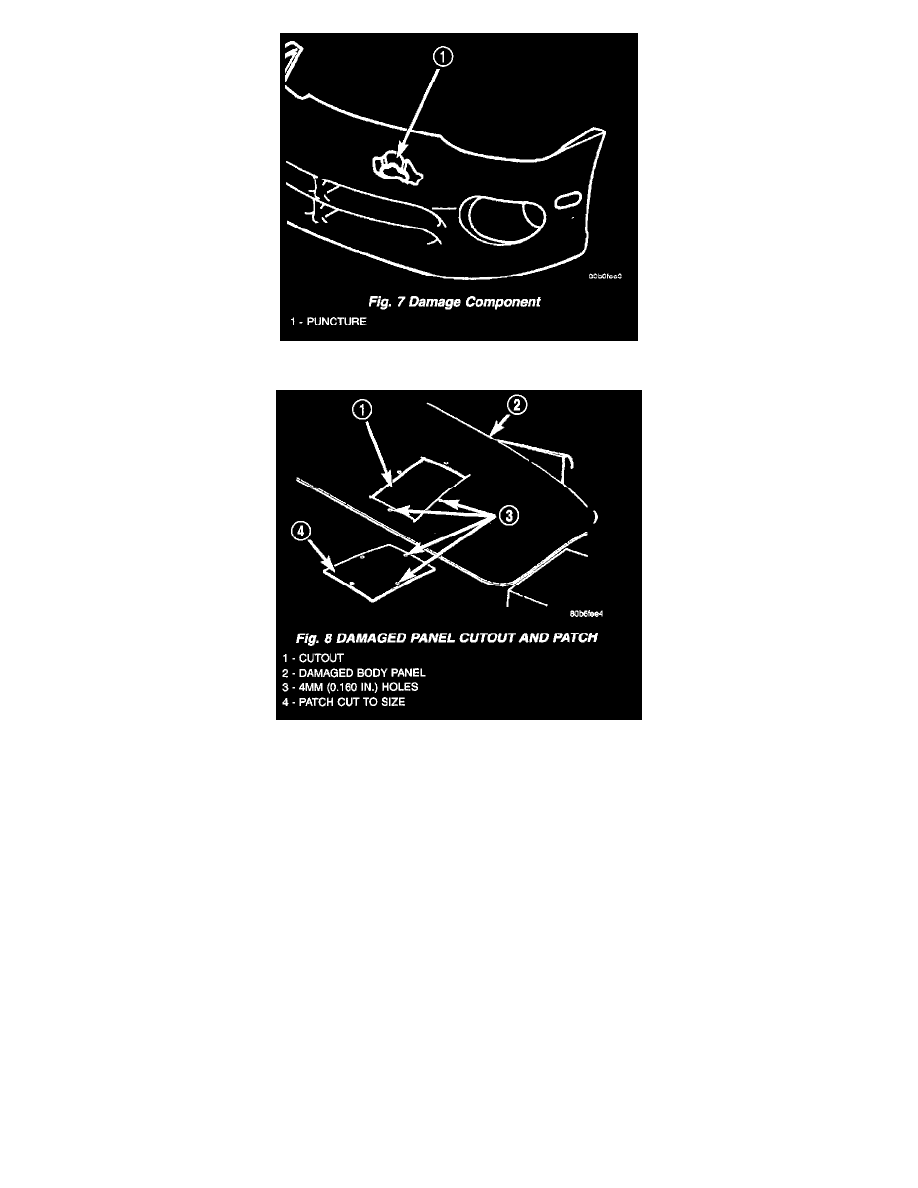Voyager V6-3.3L VIN G Flex Fuel (2000)

Fig. 7
Fig. 8
Identify the type of repair:
Puncture or Crack - Damage that has penetrated completely through the panel. Damage is confined to one general area; a panel section is not required.
However, a backer panel, open fiberglass tape, or matted material must be bonded from behind (Fig. 7).
PANEL SURFACE PREPARATION
If a body panel has been punctured, cracked, or crushed, the damaged area must be removed from the panel to achieve a successful repair. All spider web
cracks leading away from a damaged area must be stopped or removed. To stop a running crack in a SMC or RTM panel, drill a 6 mm (0.250 in.) hole at
the end of the crack farthest away from the damage. If spider web cracks can not be stopped, the panel would require replacement. The surfaces around
the damaged area should be stripped of paint and freed from was and oil. Scuff surfaces around repair area with 360 grit wet/dry sand paper, or
equivalent, to assure adhesion of epoxy repair materials.
PATCHING PANELS
An RTM or SMC panel that has extensive puncture type damage can be repaired by cutting out the damaged material (Fig. 8). Use a suitable
reciprocating saw or cut off wheel to remove the section of the SMC or RTM panel that is damaged. The piece cut out can be used as a template to shape
the new patch. It is not necessary to have access to the back of the panel to install a patch. Bevel edges of cutout at 20 degrees to expose a larger
bonding area on the outer side. This will allow for an increased reinforcement areas.
PANEL PATCH FABRICATIONS
A patch can be fabricated from any rigid fiberglass panel that has comparable contour with the repair area. discard SMC or RTM panels. Lift gates and
